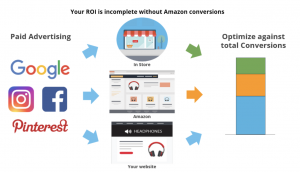Columnist Jose Cebrian explains how taking risks, connecting your marketing and developing an analytics mindset can give you a leg up in 2017.

Here we go again. New year. New budget. New targets. Budgets get squeezed while targets soar, forcing marketers to adjust their mindset, their skill set and their people-based marketing strategy.
Everybody’s business is a little different, but here are three concepts that I believe apply across the board.
Lift comes from changing the program: Do something different this year
Online sales are booming as people’s shopping habits change and new e-commerce options emerge. As a result, the revenue attributable to digital marketing continues to increase, which, with a few exceptions, is a good thing.
But it’s not enough to rely on that trend and keep doing the same things you have been doing. Send X number of campaigns per week, do a Facebook Match and campaign every quarter, run display against the same attributes and so forth. To go beyond the market rate of growth, we have to continue to push ourselves to do more, be more effective.
An example is a common user experience. Think of search to site to email, plus addressable display and social, as a connected experience. An isolated channel experience is not the norm anymore.
For most companies, search is the largest generator of leads and site traffic, but when people come to the site, they either take the desired action (e.g., buy, call, request a quote and so on) or they don’t.
Most people don’t take the desired action right away, so that lead needs to be nurtured. Using information from the site visit, you follow up with an email and enhance the email communication with coordinated messaging in other addressable channels.
Are you leveraging the search and site activity information in those other channels? Is it just at the time of interest, or are you storing that information for later use?
This thinking applies differently to different businesses — some may have ATMs; others have in-store experiences, agents or customer service reps. How are you going to connect them together and measure their impact?
Marketing automation is powerful, but it won’t fully replace discrete campaigns
Marketers must move toward more automation but not give up on their one-off campaigns. I have the benefit of hearing from many technology companies about how they position their capabilities. Much of that positioning is around automating campaigns in the buyer’s journey or automating the process of finding people who are in the market for their products. All good.
In a similar fashion, marketers are working toward marketing that is “always on.” Also a great vision. But I don’t think it is realistic to make it the only vision.
On an operational level, marketing automation around prospect/lead capture, data enhancement, scoring and nurturing offers incredible efficiency for most B2C and B2B marketers — especially around long purchase cycles that may require a lot of research or several phases to a buying decision. Taken one step further, decisioning platforms that allow you to respond with the next best offer are incredible tools to react to an inbound customer.
But marketers will not be able to automate everything. Companies will still need to launch discrete one-off campaigns to drive a particular action in a specific time frame, such as new product launches, key selling seasons, events and more.
To do this, you cannot be passive; you have to drive a number and be active. That requires distinct campaigns to prompt a consumer to take action. These campaigns can and should be coordinated with one another through marketing automation but will live on their own and be evaluated as such.
Reporting and analytics are not the same thing
Reporting is important, but you must raise your expectations and adopt an analytics mindset to propel the business.
The way I look at it, reporting states what happened, simply telling the facts based on historical data. Analytics identifies trends for future action, drives a decision and has monetary impact.
In a similar fashion to marketing tech companies describing a fully automated future, many of those same companies confuse analytics with reporting and even describe their reporting suites as “analytics.”
There is work that is clearly advanced analytics, such as propensity models for purchase, basket analytics and next best offer. That modeling should be done and leveraged in digital marketing plans in the same way it has been for years in direct mail, because it drives a monetary outcome.
Adopting an analytics mindset, though, means pushing on the reporting that you are doing. It means studying not just what the trends are, but what is driving them and how to capitalize on them.
Trend information is only valuable when followed by a recommendation on what do to about it. What are the outliers and anomalies? Are they really just outliers, or do they suggest a shift in some long-held paradigm?
You must use analytics to create predictive KPIs that can then be reported on. For example, I’ve worked with some non-e-commerce clients for which future total sales could be predicted based on site activity. In this way, reporting could be linked to an advanced future KPI, allowing the client to take action before falling behind and scrambling to catch up.
If goals are properly set, they should be challenging but attainable. They should compel you to advance the business and how you market.
If you are to be successful, you must take risks, connect your marketing and push yourself and your organization to have an analytics mindset.
This requires investment. Yes, investment in the form of money, but also in the time required to study the methods and benefits, to obtain the necessary skills and to identify the new approaches that will boldly, but carefully, advance your marketing effectiveness.
So, as you look to push your program forward this year, use the efficiencies gained through marketing automation to “fund” the time it takes to adopt an analytics mindset. Your effort will unlock secrets in the data you already have and reveal new marketing opportunities.
Some opinions expressed in this article may be those of a guest author and not necessarily Marketing Land. Staff authors are listed here.
Marketing Land – Internet Marketing News, Strategies & Tips
(79)
Report Post









